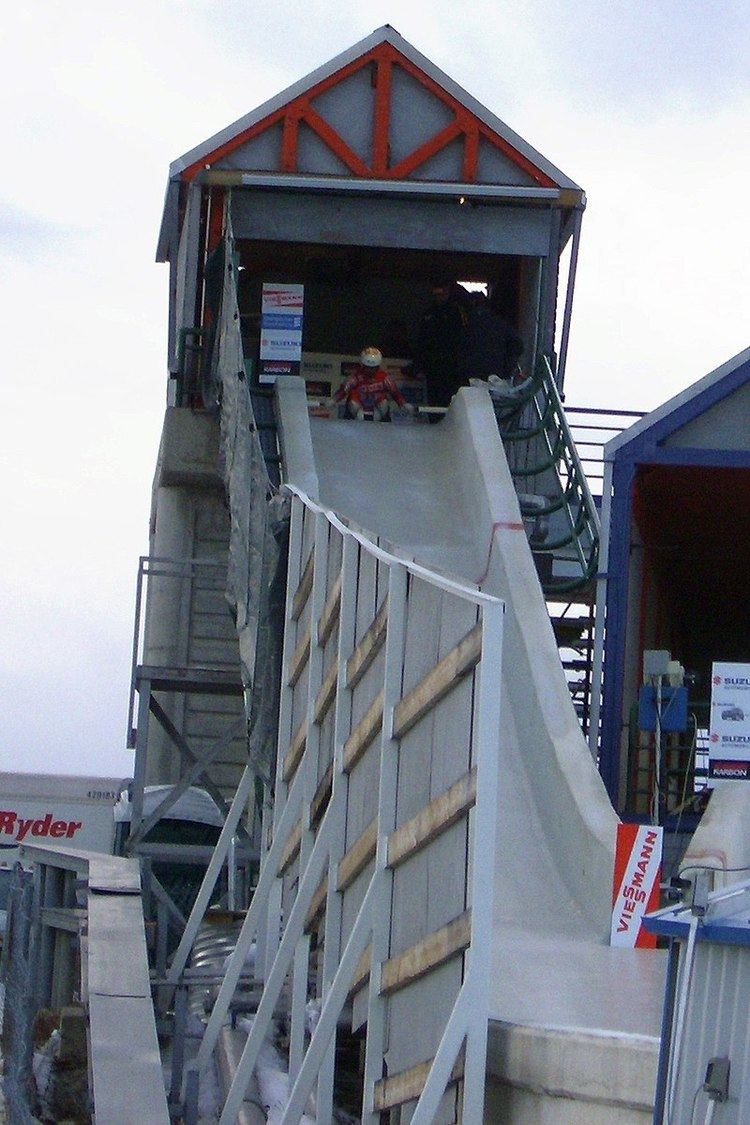 | ||
The Canada Olympic Park bobsleigh, luge, and skeleton track is a bobsleigh, luge, and skeleton track located in Calgary, Alberta. Part of Canada Olympic Park, it hosted the bobsleigh and luge competitions at the 1988 Winter Olympics. This track is one of only two of its type in the world to be featured in a non-documentary film when it was part of the 1993 American film Cool Runnings which loosely followed the Jamaican Bobsled Team during their competition in bobsleigh at the 1988 Games (The other was the 1981 British film For Your Eyes Only which included scenes from the bobsleigh track in Cortina d'Ampezzo, Italy.).
Contents
History
In 1981, Calgary was awarded the 1988 Winter Olympics over Falun, Sweden and Cortina d'Ampezzo. The track was constructed on a fast-track program running from fall 1984 to spring 1986. This was done with the help of East German technology and a consulting firm from Canada. It was the first combined track in North America and only the second of its type on the continent (Lake Placid, New York in the United States bobsleigh and luge tracks were separate when Calgary's construction was completed in spring 1986 though the Lake Placid track would be rebuilt as a combination track in January 2000.). During the 1988 Winter Olympics, the bobsleigh team from Jamaica debuted at these games, but crashed out during the third run of the four-man event. The story of the team would later be part of the 1993 film Cool Runnings with scenes done at the track. Skeleton was introduced to the track in the late 1980s with the track hosting the FIBT World Championships for skeleton in 1992. An indoor iced push facility near the track opened up in 2001. When competition does not occur on the track, it offers programs for bobsleigh and luge open to the public.
Track technical details
Costing C$ 27 million to complete, the track consisted of 48 reinforced concrete sections with five separate starting points. The facility is designed of that like a tuning fork with separate bobsleigh and luge start houses, selected to lessen construction and maintenance costs. The two portions of the track merge at turn five prior to the Omega combination curve. Lined with 100 km (62 mi) of refrigeration coolant, the track can hold ice at air temperatures up to 20 deg C (68 deg F). Sunscreens were installed on curves directly exposed to the sunlight to keep the track smooth and prevent melting. Electronic timing systems include double photo sensors at the start and finish positions of the track and artificial lighting is used to allow for night runs on the track. Lighting was adjusted at the request of the host television broadcaster (Canadian Broadcasting Corporation) prior to the games to ensure proper video coverage for the 1988 games.
Statistics
Men's start at the tower start house (currently not demolished) at the top of the track while the women's is at the regular starthouse at the top of the track.
The turn names were initially given during the 1920 Winter Olympic broadcast (ABC in the United States). All curves shown are bobsleigh curves. The luge section joins the boblsleigh and skeleton section at turn five. Turns 1 through 5 do not have turn names.
